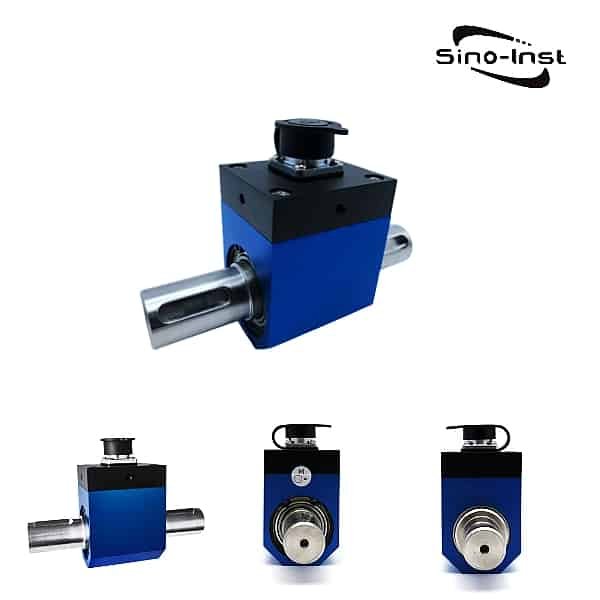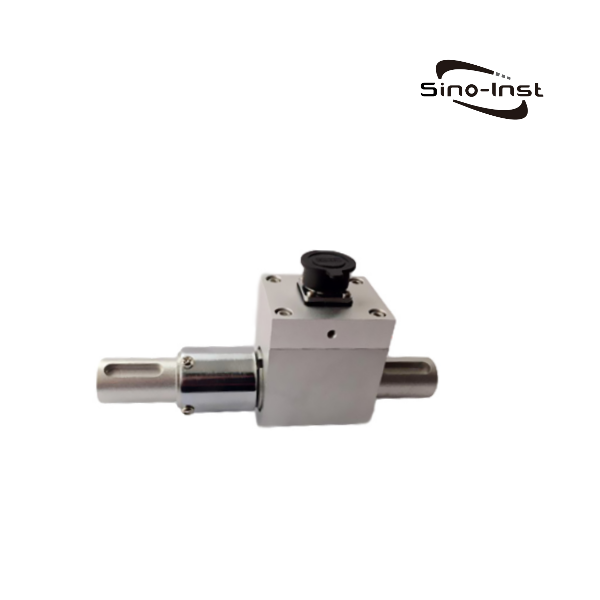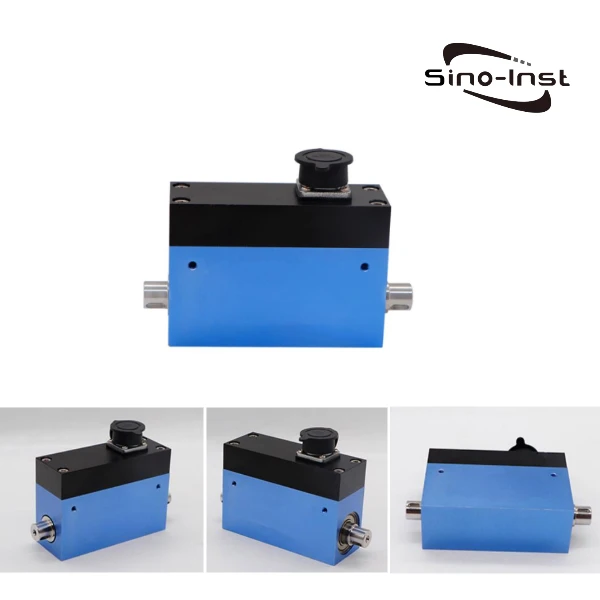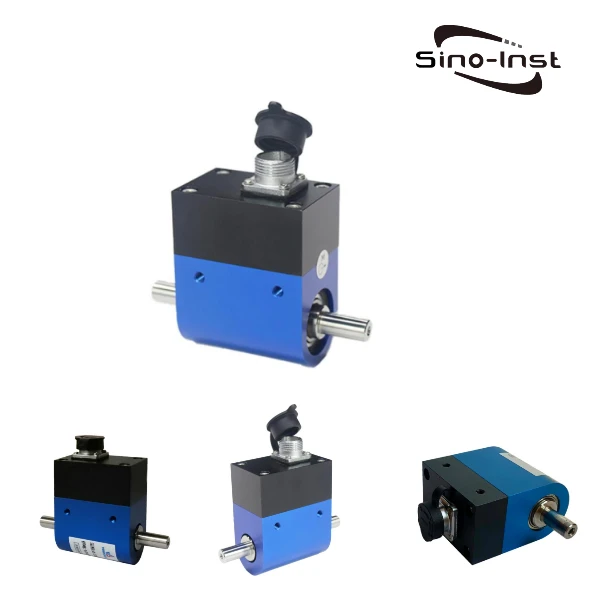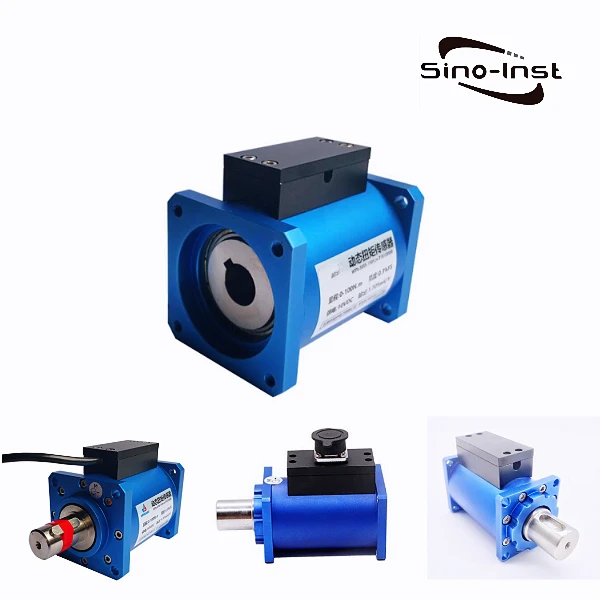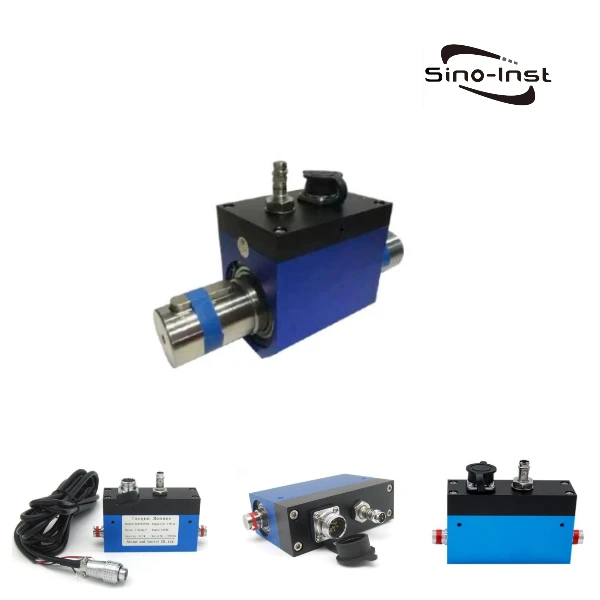
Rotary torque transducer is a device used to measure the torque of a rotating system. Rotary Torque Transducer (Model:1060) is developed on the basis of strain gauge technology. 1060 Rotary Torque Transducer can measure rotational speed. Such as applied by continuous and pulse electric tools Tightening torque. It can measure both static torque and rotating torque; the range is 0-5000Nm optional, non-standard can be customized.
Features of 1060 Rotary Torque Transducer
- Both static torque and rotating torque can be measured;
- Measurable speed;
- High detection accuracy, good stability and strong anti-interference;
- The speed can reach 1800-4000 rpm;
- The forward and reverse torque can be continuously measured without repeated zero adjustment;
- There are no wear parts such as collector rings, so it can run at high speed for a long time;
- The strain elastic body has high strength and can bear 150% load;
- Strong anti-interference, can be installed in any position and direction;
- The sensor part can be used independently from the secondary instrument. It directly forms a torque measurement device with the measurement board, PLC or DCS;
Technical Parameters
| Parameters | Technical indicators |
| Range | 0.2,0.3,0.5,10,200,500,200,5000Nm |
| Sensitivity | 1.5±10% mV / V |
| Zero output | ±1% F.S. |
| Nonlinear | ±0.1,0.3% F.S. |
| Hysteresis | ≤±0.05% F.S. |
| Repeatability | ≤±0.05% F.S |
| Creep | ≤±0.03% F.S/30min |
| Temperature Sensitivity Drift | 0.03% F.S. / 10℃ |
| Zero temperature drift | 0.03% F.S. / 10℃ |
| Input resistance | 350,750±10Ω |
| Input resistance | 350,700±5Ω |
| Response frequency | 100μS |
| Insulation resistance | ≥5000MΩ/ 100VDC |
| Excitation voltage | 10VDC(9-15VDC) |
| Temperature Compensation Range | -10 ~ 60℃ |
| Range of working temperature | -20 ~ 65℃ |
| Safe Overload | 150% F.S. |
| Extreme overload | 200% F.S. |
| Cable size | Ø5.2×3m |
| Electrical connections | Red/E+, Black/E-, Green/S+, White/S- |
| Material | Aluminium, stainless or alloy steel |
| Other request | customizable |
Dimensions
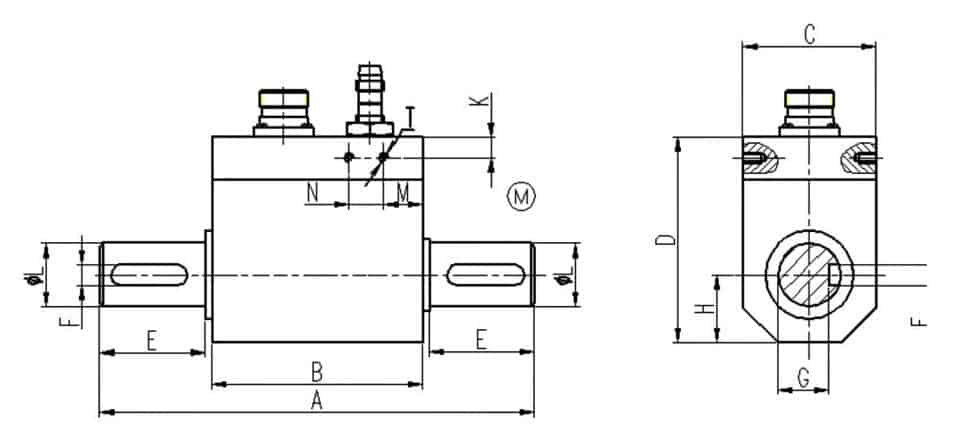
| Model | Range Nm | A | B | C | D | E | F | G | H | K | φL | N | M | T |
| 1060-005 | 5 | 104 | 84 | 32 | 52 | 8.5 | 3 | 8.2 | 14 | 22 | 10 | 59 | 8 | 4-M3 deep 6 |
| 1061-100 | 100 | 124 | 60 | 38 | 58 | 30 | 6 | 14.5 | 19 | 6 | 18 | 10 | 11 | 4-M3 deep 10 |
| 1062-500 | 500 | 159 | 73 | 53 | 73.5 | 40 | 8 | 24 | 27 | 17 | 28 | 15 | 12 | 4-M3 deep 10 |
| 1063-1000 | 1000 | 249 | 125 | 90 | 125 | 60 | 16 | 44 | 45 | 28 | 50 | 25 | 14 | 4-M3 deep 12 |
| 1064-2000 | 2000 | 298 | 132 | 95 | 128 | 80 | 16 | 49 | 47.5 | 28 | 55 | 25 | 22 | 4-M3 deep 12 |
| 1065-5000 | 5000 | 367 | 157 | 139 | 171 | 100 | 22 | 66 | 67.5 | 30 | 75 | 30 | 22 | 4-M3 deep 12 |
More About Rotary Torque Transducer
If you cannot find an answer to your question in our 1060 Rotary Torque Transducer, you can always contact us
and we will be with you shortly.
More Featured rotary torque transducers for sale
Sino-Inst is a manufacturer of 1060 Rotary Torque Transducer-Torque and Rotation Measurement. We offer more than 10 types of Rotary Torque Transducers. Rotary Torque Transducers can measure a variety of different mechanical power, rotational speed and torque measuring devices.
Rotary Torque Transducer is also called rotary torque sensor, torque transducer. Mainly used for torque measurement in dynamic situations. The Rotary Torque Transducer is equipped with a speed measuring device, which can measure the rotational speed while measuring the torque. At this time, the Rotary Torque Transducer can also be called a torque speed sensor.
Sino-Inst’s Rotary Torque Transducer, made in China, have good quality, with better prices. Our Rotary Torque Transducers are widely used in China, India, Pakistan, USA and other countries.
Sino-Inst’s entire team is well trained, so we can ensure that each customer’s needs are met. If you need any help with your product requirements, whether it is a Rotary Torque Transducer, level sensors, or other equipment, please give us a call.
Request a Quote

Wu Peng, born in 1980, is a highly respected and accomplished male engineer with extensive experience in the field of automation. With over 20 years of industry experience, Wu has made significant contributions to both academia and engineering projects.
Throughout his career, Wu Peng has participated in numerous national and international engineering projects. Some of his most notable projects include the development of an intelligent control system for oil refineries, the design of a cutting-edge distributed control system for petrochemical plants, and the optimization of control algorithms for natural gas pipelines.
Rotary Torque Transducer for the Torque of Rotating System

Rotary torque transducer is a device used to measure the torque of a rotating system. Rotary Torque Transducer (Model:1060) is developed on the basis of strain gauge technology. 1060 Rotary Torque Transducer can measure rotational speed. Such as applied by continuous and pulse electric tools Tightening torque. It can measure both static torque and rotating torque; the range is 0-5000Nm optional, non-standard can be customized.
Product SKU: 1060 Rotary Torque Transducer-Torque and Rotation Measurement
Product Brand: Sino-Inst
Product Currency: USD
Product Price: 800
Price Valid Until: 2029-09-09
Product In-Stock: InStock
5

